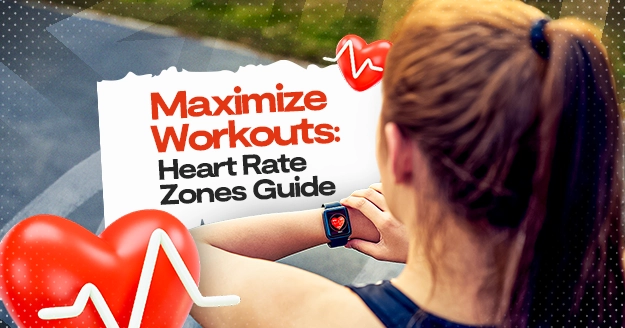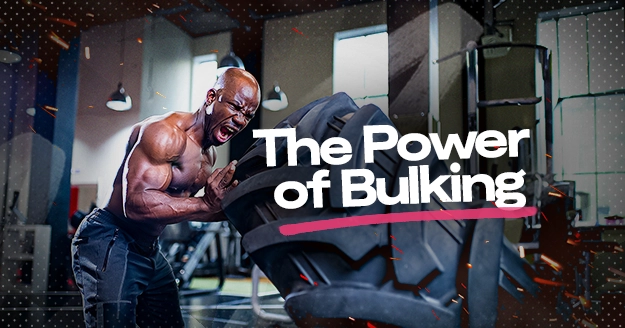Unlocking the full potential of your workouts is not only about pushing yourself to the limit. It is about working smarter, not harder. You may improve your training by understanding and using workout heart rate zones!
Heart Rate Zone: What is it?
Before we dig deeper into the topic, it is just right to get to know what we mean by heart rate zones. Basically, these are ranges that reflect different levels of exercise intensity, each with its own unique benefits. The maximum heart rate (MHR), or the highest beats per minute your heart can reach while exerting maximum exertion, is the standard calculation used to determine these zones.
What is Heart Rate Zone Training?
Heart Rate Zone training is a method of exercise that uses different heart rate zones to guide the intensity of your workouts. Each zone represents a range of heartbeats per minute (BPM) that corresponds to a specific level of exertion and targets different aspects of fitness.
The Five Heart Rate Zones
- Zone 1: Very Light (50-60% of HRR)
It is the lightest intensity level in heart rate zone training, also known as the Active Recovery Zone. It is a comfortable phase where you can easily hold a conversation. Training in Zone 1 is mainly used for warm-ups, cool-downs, and recovery. It enhances general health, facilitates muscular recovery, and primes the body for more strenuous exercise without stressing the heart or your muscles.
Activities like walking, light cycling on flat terrain, yoga, and light jogging are suitable for this zone.
- Zone 2: Light (60-70% of HRR)
This zone, also known as the aerobic or endurance zone, is perfect for extended exercise sessions. It is good for weight loss and enhancing metabolic health since it increases your aerobic base and is best used for burning fat as your main energy source. It is a phase great for a steady or comfortable jog, bike rides, extended cardio sessions, or hiking on easy to moderate trails with a consistent pace.
- Zone 3: Moderate (70-80% of HRR)
It is a moderate intensity level in heart rate zone training, commonly referred to as the tempo or aerobic threshold zone. It is a period where you are working harder but can still maintain a conversation with some effort.
Training in Zone 3 boosts cardiovascular fitness and increases your ability to sustain moderate efforts over time. It also improves your body’s ability to utilize oxygen efficiently, leading to better energy production and utilization during workouts. This zone is usually used for tempo workouts, where the goal is to hold a steady yet challenging pace to improve aerobic capacity and endurance.
- Zone 4: Hard (80-90% of HRR)
This training zone is a high-intensity level and is often referred to as the lactate threshold or anaerobic threshold zone. Working hard in this zone limits the number of words you can express at once. It is used for High-Intensity Interval Training (HIIT) and helps improve your speed, performance, and ability to handle lactic acid. Moreover, it builds both aerobic and anaerobic fitness, making you stronger and faster.
Training in Zone 4 is also race-specific training as it mimics the demands of a race, which will help you prepare your body for an event. It is crucial for enhancing athletic performance and for people who wish to push themselves to the fullest and achieve their ideal fitness level.
- Zone 5: Maximum (90-100% HRR)
In this zone, you are giving maximum effort and can only sustain it for short bursts. Training in Zone 5 focuses on peak performance, building explosive power and speed. It is used for short, intense workouts like sprints and high-intensity interval training (HIIT) to significantly improve your anaerobic capacity and overall fitness.
Pushing through the discomfort of Zone 5 builds mental toughness and resilience, teaching you to embrace discomfort and push your limits.
How to Use Heart Rate Zones in Your Workouts
-
Determine Your Maximum Heart Rate
To use cardiac heart rate zones effectively, you first need to determine your Maximum Heart Rate (MHR). The common formula used is 220 minus your age. However, the results of this method are inaccurate for everyone.
For example, if you are 30 years old, you can calculate your heart rate zone by subtracting 30 from 220. Therefore, your estimated MHR would be 190 beats per minute (220 – 30 = 190).
You can also opt to use alternative formulas such as the Tanaka formula or the Londeree and Moeschberger formula. Here are some examples using the previously mentioned data:
- Tanaka formula: 208 – (0.7 x 30) = 187 beats per minute MHR
- Londeree formula: 206.3 – (0.7 x 30) = 185 beats per minute MHR
However, for more precision, you can undergo an exercise stress test or VO2 max test under professional supervision.
- Determine your Resting Heart Rate
It is best to assess your RHR in the morning right after you wake up and before you get out of bed because your body is at its most comfortable at this point. Count the beats you feel for sixty seconds after you locate your pulse on your wrist or neck.
- Calculate your Heart Rate Reserve
To calculate your Heart Rate Reserve (HRR), you need to know your maximum heart rate (MHR) and your resting heart rate (RHR). The difference between your MHR and RHR will be your HRR, or:
Heart Rate Reserve = Maximum Heart Rate Reserve – Resting Heart Rate
For instance, if you used the Tanaka Formula for the MHR result and your RHR is 60 beats per minute, your HRR will be 127 bpm.
-
Calculate your Zones
The Karvonen formula is a method to calculate your training zone. The formula is expressed as:
Training Heart Rate (THR) = RHR + (Intensity percentage x HRR)
Using the results from the examples above, the computation will be as follows:
THR = 60 bpm + (0.7 x 127)
= 149 bpm
Now that you have your target workout zones heart rate, you can use it to guide your workouts. For example, if you want to train in Zone 2 with a target intensity of 70%, aim for a heart rate of 149 bpm.
To summarize, in order to calculate a training heart rate zone, you need to know your Maximum Heart Rate, Resting Heart Rate, desired intensity percentage, and Heart Rate Reserve.
Practical Tips for Using Heart Rate Zones in Workouts
- Warm Up and Cool Down
Remember to always start and end your workouts in Zone 1 for warm-up and cool-down. This helps prevent injury, ensures that your body is properly prepared for the intensity ahead, and allows it to recover effectively afterward.
- Listen to your body
Workout heart rate zones serve an overall guide, but it’s important to be aware of your feelings and make adjustments as necessary. As your fitness improves, regularly reassess your MHR and zones to ensure your training remains effective, as they may change over time.
- Plan your Workouts
Planning your workouts is your roadmap to optimize your training sessions for maximum effectiveness. It helps you set clear fitness goals—whether it is improving endurance, increasing speed, or losing weight—and understand how different heart rate zones can help you achieve them, thus making the most out of your workouts.
Decide which heart rate zones you will focus on during each session. By incorporating different zones into your plan, you can ensure that you are challenging your body in the right way and making progress toward your goals.
Benefits of Heart Rate Zone Training
After learning all this information, you might still be wondering why you should go the extra mile of doing calculations just to exercise. Here are some benefits of heart rate zone training that might change your mind:
- Personalized Intensity
One of the biggest benefits of heart rate zone training is that your workouts are custom-fit to your own fitness level and goals, ensuring that none of your efforts go to waste. This personalized approach prevents you from working too hard or not hard enough. Continuously pushing yourself too hard puts you at danger for burnout and injury.
Another great aspect of this personalization is that it adapts as you get fitter. As your fitness improves, your heart rate response will change. You might find that you can maintain a higher intensity for longer periods, or your heart rate doesn’t spike as quickly as it used to.
- Increased Efficiency
Since you have specific target zones, it can make your workouts more effective. You can concentrate on different aspects of your workout without overtraining or undertraining.
- Progress Tracking
As you regularly monitor your heart rate, it can help you track improvements over time. You may notice that you need to exert more effort to maintain the same heart rate zones as you get fitter, which is a sign of better cardiovascular health.
Use a heart rate monitor to track your BPM during workouts. Change your tempo, resistance, or effort if your heart rate is outside of your desired zone. This real-time feedback will help you stay in the desired zone, ensuring that you are working at the right intensity.
- Motivation and Engagement
Heart Rate Zone Training encourages variety in workouts by including different intensity levels and training zones. This variety prevents boredom and keeps workouts engaging by challenging the body in various ways. There is always something new to try, keeping motivation levels high.








